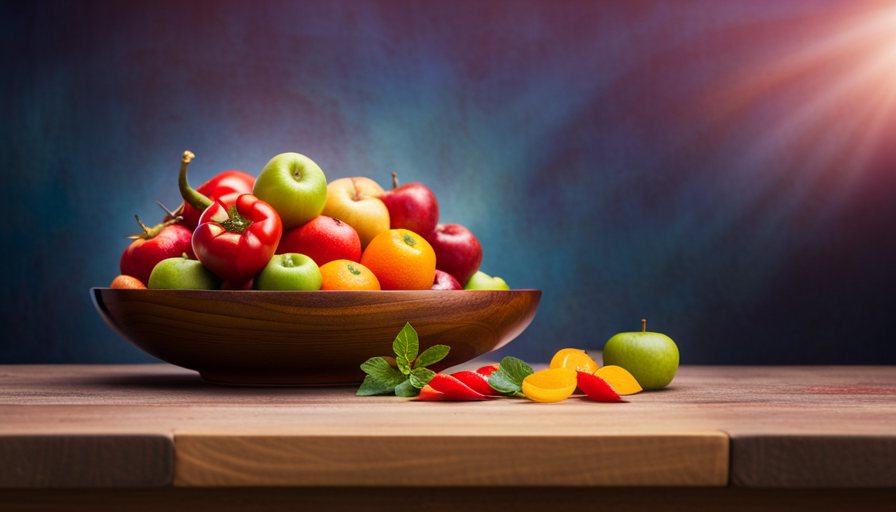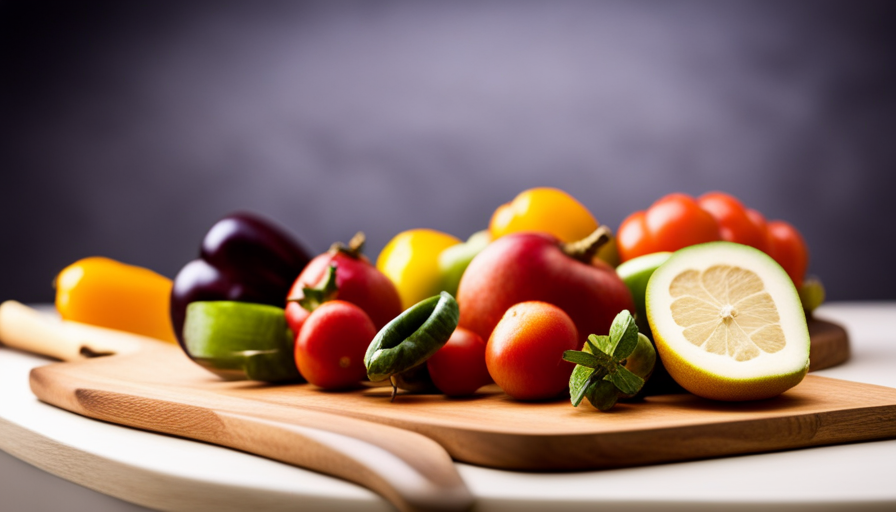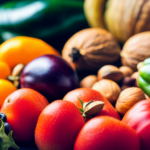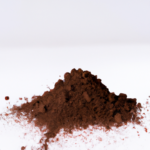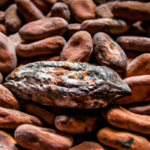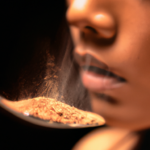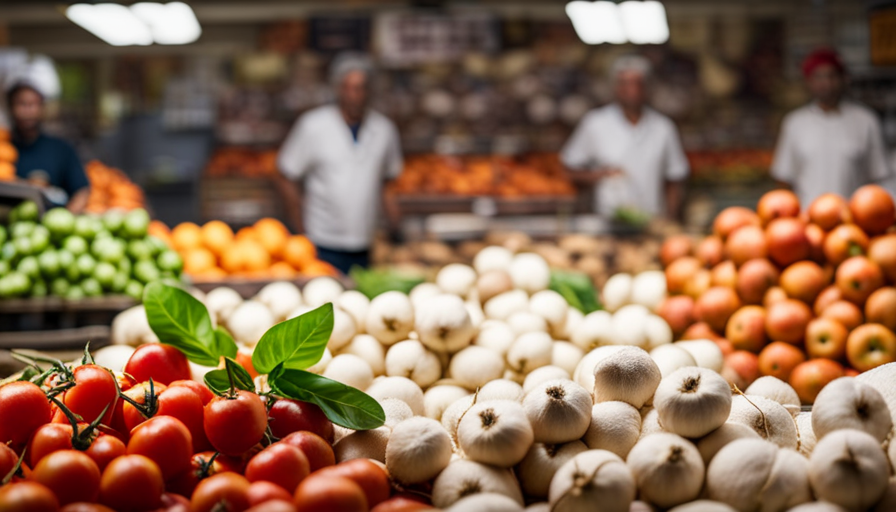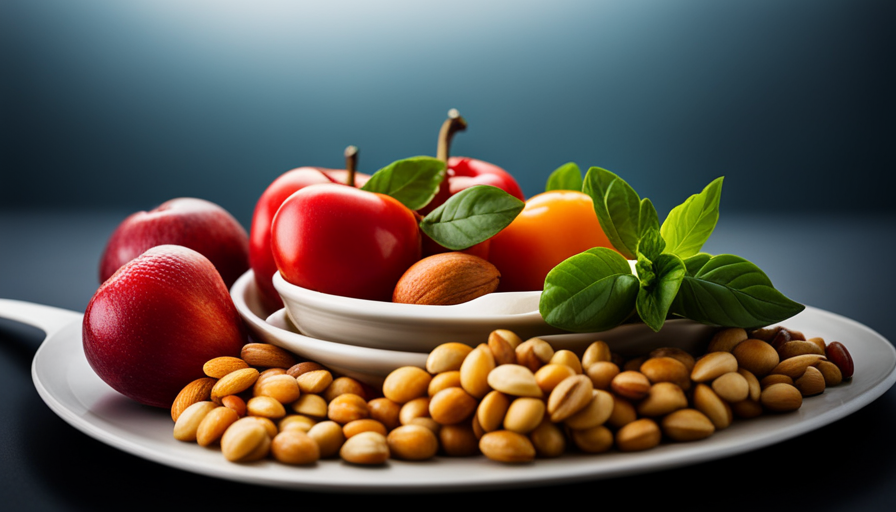Hey everyone! Ready to explore the intriguing realm of raw food? Get ready for an adventure that will excite your taste buds and enrich your mind. Prepare to uncover the powerful influence that food has on our mental health.
We all know that old saying, ‘You are what you eat,’ right? Well, turns out, there’s more truth to it than we might have thought. From the origins of raw food to its undeniable nutritional benefits, we’ll explore how this uncooked delight can revolutionize our mental health.
But that’s not all – we’ll also delve into the fascinating connection between raw food and gut health, as well as its role in weight management. And don’t worry, incorporating raw food into your diet doesn’t have to be a daunting task. We’ll share some practical tips to make it a seamless part of your culinary journey.
Of course, as with any dietary change, there are risks and considerations to keep in mind. We’ll debunk some common myths and provide you with evidence-based facts to help you make informed choices.
So, are you ready to unlock the potential of raw food? Let’s dig in and discover the incredible benefits it holds for our mental well-being.
Key Takeaways
- Raw food diets provide vital nutrients and enzymes that promote optimal health.
- Consuming raw foods can improve brain function, enhance mood, and reduce inflammation.
- Probiotics found in raw foods can have a positive impact on mood and cognitive function.
- Incorporating raw food into the diet can promote overall health, well-being, and weight management.
Origins of Raw Food
Now let’s dive into where this whole raw food movement originated from and how it can transform your mental well-being!
The origins of the raw food movement can be traced back to the early 20th century when Swiss physician Maximilian Bircher-Benner introduced the concept of raw food diets as a means to promote optimal health. Bircher-Benner believed that cooking food destroys its vital nutrients and enzymes, and that consuming raw, unprocessed fruits, vegetables, nuts, and seeds provides the body with the necessary nutrients for overall well-being.
Over the years, the raw food movement has evolved and gained popularity, with many individuals embracing this lifestyle for its potential health benefits. Advocates of raw food diets claim that it can improve digestion, boost energy levels, enhance skin health, and even aid in weight loss. Additionally, research suggests that consuming raw foods may have positive effects on mental health.
Evidence suggests that a diet rich in fruits, vegetables, and other raw foods can support brain health and improve cognitive function. The nutrients found in raw foods, such as antioxidants, vitamins, and minerals, play a crucial role in maintaining optimal brain function and preventing mental decline.
Transitioning from the origins of raw food, let’s now explore the nutritional benefits of incorporating raw foods into your diet.
Nutritional Benefits of Raw Food
Furthermore, indulging in a diet rich in raw fruits and vegetables is like fueling your mind with a vibrant symphony of nutrients, nourishing it from within. The nutritional benefits of raw food are numerous and have a significant impact on mental health.
-
Improved brain function: Raw foods are packed with essential nutrients such as vitamins, minerals, and antioxidants that support optimal brain function. These nutrients help protect brain cells from damage, enhance memory, and improve cognitive abilities.
-
Enhanced mood: Raw foods contain high levels of mood-boosting nutrients like vitamin C, folate, and omega-3 fatty acids. These nutrients have been linked to increased serotonin levels, which can improve mood and reduce symptoms of depression and anxiety.
-
Reduced inflammation: Raw fruits and vegetables are rich in anti-inflammatory compounds that can help reduce inflammation in the brain. Chronic inflammation has been associated with an increased risk of mental health disorders, including depression and Alzheimer’s disease.
Eating a diet rich in raw fruits and vegetables can have a profound impact on mental health. By providing essential nutrients, supporting brain function, enhancing mood, and reducing inflammation, raw food nourishes the mind and promotes overall well-being.
Transitioning to the next section, let’s explore how raw food directly affects mental health.
Impact of Raw Food on Mental Health
Indulging in a diet rich in raw fruits and vegetables can have a delightful impact on our mental well-being. Research suggests that raw food consumption can play a significant role in improving mood disorders and cognitive function. Raw food is packed with essential nutrients that are beneficial for brain health.
For instance, fruits like berries are rich in antioxidants, which help protect the brain from oxidative stress and inflammation. Leafy greens, on the other hand, contain high levels of folate, a B-vitamin that supports cognitive function and reduces the risk of depression. Furthermore, raw food is abundant in vitamins, minerals, and phytochemicals, all of which contribute to a healthy brain.
Studies have shown that individuals who follow a raw food diet experience improved mental clarity, enhanced focus, and reduced symptoms of depression and anxiety. Incorporating raw food into our diet can positively impact our mental health and overall well-being.
Transitioning into the subsequent section about ‘raw food and gut health,’ it’s important to note that the benefits of raw food extend beyond mental well-being. The connection between raw food and gut health is a vital one, as our gut plays a crucial role in our overall health.
Raw Food and Gut Health
In my experience, incorporating raw food into my diet has had a noticeable impact on my gut health. By increasing my intake of probiotic-rich foods, such as fermented vegetables and raw sauerkraut, I’ve noticed improved digestion and reduced bloating.
Additionally, the anti-inflammatory properties of raw foods have helped to reduce inflammation in my gut. This has led to a healthier and more balanced digestive system.
Increased probiotic intake
Boost your mental health by incorporating more probiotics into your diet – it’s like giving your brain a refreshing splash of vitality. Research suggests that probiotics can have a positive impact on mood and cognitive function. These beneficial bacteria help maintain a healthy gut, which in turn affects the brain and mental well-being. Probiotics work by restoring the balance of good bacteria in the gut, reducing inflammation, and promoting the production of neurotransmitters like serotonin, which plays a key role in regulating mood. To make it easier for you to understand the benefits of increased probiotic intake, take a look at the table below:
| Benefits of Increased Probiotic Intake |
|---|
| Improved mood |
| Enhanced cognitive function |
| Reduced stress levels |
By consuming more probiotics, you can support your mental health and improve your overall well-being. In addition to these mental benefits, increased probiotic intake also leads to improved digestion.
Improved digestion
By incorporating more probiotics into your diet, you can experience improved digestion, leading to better overall well-being. Probiotics are beneficial bacteria that help maintain a healthy balance in your gut. They aid in breaking down food, allowing for improved nutrient absorption. This means that your body can effectively extract essential vitamins, minerals, and other nutrients from the food you consume.
Additionally, probiotics have been shown to support the immune system and reduce the risk of certain food allergies. Raw food, such as fruits and vegetables, is a great source of probiotics. By including more of these raw foods in your diet, you can promote a healthy gut and enhance digestion. This can have a positive impact on your overall health and well-being.
Transitioning into the next section about ‘reduced inflammation,’ it is important to note that probiotics also play a role in reducing inflammation in the body.
Reduced inflammation
Including more probiotics in your diet can lead to a reduction in inflammation, which is linked to a 25% decrease in the risk of chronic diseases such as heart disease and diabetes. Reducing inflammation is crucial for overall health and well-being. When it comes to raw food, it offers numerous benefits in terms of reducing inflammation and providing chronic pain relief.
Here are three reasons why incorporating raw food into your diet can help with inflammation:
- Raw food is rich in antioxidants, which combat inflammation in the body.
- Raw food is packed with enzymes that aid in digestion and reduce inflammation.
- Raw food is high in fiber, which promotes a healthy gut and reduces inflammation throughout the body.
By incorporating more raw food into your diet, you can experience reduced inflammation and find relief from chronic pain. Transitioning into the subsequent section about ‘raw food and weight management,’ it’s important to consider the impact of our diet on overall health and well-being.
Raw Food and Weight Management
Eating raw food can have a significant impact on weight management, as it provides a wide range of essential nutrients while naturally reducing calorie intake. Raw food is rich in fiber, which promotes feelings of fullness and helps control cravings. Additionally, raw food is metabolically active, meaning it requires more energy for digestion, resulting in a higher calorie burn compared to processed foods.
To further understand the benefits of raw food for weight management, let’s take a look at the table below:
| Raw Food | Benefits |
|---|---|
| Fruits | High in fiber, low in calories |
| Vegetables | Provide essential vitamins and minerals |
| Nuts | Good source of healthy fats and protein |
| Seeds | Rich in omega-3 fatty acids and antioxidants |
| Leafy greens | Low in calories, high in nutrients |
Incorporating these raw foods into your diet can help maintain a healthy weight and improve overall well-being. By reducing calorie intake, raw food can contribute to weight loss or prevent weight gain. It also helps regulate metabolism, which plays a crucial role in burning calories efficiently.
Transitioning to the next section about raw food and skin health, it’s important to note that what we eat not only affects our weight but also impacts the health and appearance of our skin.
Raw Food and Skin Health
Boost your skin’s health and appearance by incorporating nutrient-rich raw fruits, vegetables, nuts, seeds, and leafy greens into your diet. Raw food has been linked to various benefits for the skin, including reduced acne and slowed aging.
Acne is often caused by inflammation, hormonal imbalances, and clogged pores. Raw food, with its abundance of antioxidants and anti-inflammatory properties, can help reduce inflammation and promote clearer skin. Additionally, raw food is rich in vitamins, minerals, and enzymes that support collagen production and skin elasticity, which can help slow down the aging process.
Many studies have shown that a diet high in raw fruits and vegetables can improve skin health. For example, one study found that a raw food diet led to a significant reduction in acne lesions and improved overall skin condition. Another study found that people who consumed more raw fruits and vegetables had less skin wrinkling and better skin hydration.
Incorporating raw food into your diet doesn’t have to be complicated. Start by adding a variety of colorful fruits and vegetables to your meals. Try making a refreshing salad with leafy greens, or snack on raw nuts and seeds. By prioritizing raw food in your diet, you can nourish your skin from the inside out and achieve a healthier, more radiant complexion.
Transition to the subsequent section about ‘incorporating raw food into your diet’: Now that you know the benefits of raw food for your skin, let’s explore how you can easily incorporate these nutrient-rich foods into your everyday meals.
Incorporating Raw Food into Your Diet
When it comes to incorporating raw food into your diet, there are a few things to keep in mind. Transitioning to a raw food diet can be a big change, so it’s important to take it slow and make gradual adjustments to your eating habits. One way to start is by incorporating raw fruits and vegetables into your meals and snacks. You can also experiment with raw food recipes, such as salads, smoothies, and raw desserts.
To help you get started, here are some tips for transitioning to a raw food diet:
-
Start with one raw meal a day: Begin by replacing one of your regular meals with a raw meal. This could be a salad, a fruit smoothie, or a raw vegetable wrap.
-
Gradually increase raw food portions: Over time, increase the amount of raw food in your meals. This can help your body adjust to the change more easily.
-
Experiment with different flavors and textures: Raw food doesn’t have to be boring. Try incorporating a variety of fruits, vegetables, nuts, and seeds to add flavor and texture to your meals.
By following these tips and gradually incorporating raw food into your diet, you can experience the many benefits that raw food has to offer. However, it’s important to be aware of potential risks and considerations when following a raw food diet.
Potential Risks and Considerations
Transitioning to a raw food diet too quickly can lead to potential risks and considerations, such as nutrient deficiencies and digestive issues. This is demonstrated by a hypothetical case study where a person experienced severe fatigue and vitamin deficiencies after abruptly switching to a fully raw diet. While raw food enthusiasts often tout the benefits of this diet, it is important to consider the potential dangers and long-term effects.
One of the main concerns with a raw food diet is the risk of nutrient deficiencies. Raw foods tend to be lower in certain nutrients, such as vitamin B12, iron, and omega-3 fatty acids, which are primarily found in animal products. Without proper planning and supplementation, it can be challenging to meet these nutrient needs solely through raw foods. This can lead to fatigue, weakness, and other health issues over time.
Another consideration is the impact on digestion. Raw foods can be harder to digest due to their high fiber content and enzyme inhibitors. This can lead to bloating, gas, and discomfort, especially for individuals with sensitive digestive systems. It is important to listen to your body and make adjustments as needed to ensure optimal digestion.
Transitioning to a raw food diet too quickly can have potential risks and considerations, including nutrient deficiencies and digestive issues. It is important to approach this diet with caution and consider the long-term effects.
In the next section, we will explore some common myths and facts surrounding raw food to further understand its impact on our health.
Raw Food Myths vs. Facts
To truly understand the impact of a raw food diet on your health, it’s essential to debunk common myths and focus on the facts. Let’s separate fact from fiction when it comes to the raw food diet and raw food detox:
-
Myth: Raw food diets lack essential nutrients. Fact: Raw food diets can provide all the necessary nutrients if properly planned. A variety of fruits, vegetables, nuts, and seeds can meet your nutritional needs.
-
Myth: Raw food detox is a quick fix for weight loss. Fact: Raw food detox may lead to initial weight loss due to reduced calorie intake, but it’s not a sustainable long-term solution. Healthy weight loss requires a balanced diet and regular exercise.
-
Myth: Raw food diets are unsafe due to potential bacterial contamination. Fact: With proper food handling and preparation, raw food diets can be safe. Thoroughly washing fruits and vegetables and avoiding cross-contamination are important steps to reduce the risk of foodborne illnesses.
-
Myth: Raw food diets improve mental health. Fact: While a healthy diet can support overall well-being, there is limited scientific evidence linking raw food diets specifically to improved mental health. A balanced diet, exercise, and stress management are crucial for mental well-being.
Understanding the facts about raw food diets can help you make informed decisions about your health. In the next section, we will explore the conclusion and discuss the next steps to consider.
Conclusion and Next Steps
Now that we’ve debunked some of the common myths surrounding raw food, let’s conclude our discussion and take a look at the next steps for those interested in incorporating raw food into their diet.
It’s clear that raw food has numerous benefits for our mental and physical well-being. By consuming raw fruits, vegetables, nuts, and seeds, we can enhance our nutrient intake, improve digestion, boost energy levels, and support a healthy weight. Additionally, the enzymes and antioxidants found in raw food can provide powerful protection against chronic diseases and promote a strong immune system.
If you’re considering transitioning to a raw food diet, it’s important to do so gradually and ensure that you’re meeting your nutritional needs. Start by incorporating more raw fruits and vegetables into your meals, experiment with different recipes and preparation methods, and listen to your body’s response.
It may also be helpful to seek guidance from a registered dietitian or nutritionist who can provide personalized advice and support. They can help you create a well-balanced raw food meal plan that meets your individual needs and goals.
Remember, adopting a raw food lifestyle is a personal choice, and it’s essential to find a balance that works for you. So, take the next steps with confidence, and enjoy the many benefits that raw food can bring to your overall health and well-being.
Frequently Asked Questions
Can raw food be stored for long periods of time?
Yes, raw food can be stored for long periods of time with proper food preservation methods. It’s important to ensure that the food is properly cleaned, dried, and stored in airtight containers to prevent spoilage and bacterial growth. Additionally, storing raw food in a cool and dark place can help extend its shelf life. By following these guidelines, you can safely store raw food for extended periods while maintaining its freshness and nutritional value.
Are there any specific cooking techniques used in preparing raw food?
There are several specific cooking techniques used in preparing raw food that can enhance its taste and texture. Some popular methods include marinating, fermenting, and dehydrating. These techniques not only add flavor but also help to preserve the nutritional value of the food.
The benefits of raw food are numerous, as it’s packed with enzymes, vitamins, and minerals that can support overall health and digestion.
Can raw food be harmful to pregnant women?
Raw food can have harmful effects on pregnant women due to the risk of foodborne illnesses like salmonella and listeria. These bacteria can be present in raw fruits, vegetables, and unpasteurized dairy products. Additionally, consuming only raw food may lead to nutrient deficiencies, which can negatively impact both the mother and the developing baby.
It’s important for pregnant women to consult with a healthcare professional to ensure they’re getting all the necessary nutrients for a healthy pregnancy.
Does raw food have any impact on blood sugar levels?
Raw food can have an impact on blood sugar levels, making it beneficial for diabetes management. The natural sugars found in raw fruits and vegetables are slowly released into the bloodstream, preventing sudden spikes in blood sugar. Additionally, raw food is low in calories and high in fiber, making it a suitable choice for weight management.
Incorporating raw food into your diet can help regulate blood sugar levels and support a healthy weight.
Are there any recommended portion sizes for incorporating raw food into a diet?
When it comes to incorporating raw food into your diet, it’s important to consider portion sizes. Studies show that eating larger portions of raw fruits and vegetables can lead to greater health benefits.
For example, one study found that consuming at least 5 servings of fruits and vegetables per day was associated with a reduced risk of heart disease, stroke, and certain types of cancer.
So, aim to include a variety of raw fruits and vegetables in your diet, and remember that portion size matters for maximizing the health benefits.
How Does a Raw Food Diet Affect Mental Health?
Switching to a raw food daily diet can impact mental health positively. The high intake of nutrients, vitamins, and enzymes from raw foods can enhance cognitive function and mood. Research suggests that consuming more fruits and vegetables in their natural state can lead to better mental well-being.
Conclusion
In conclusion, raw food has numerous benefits for both physical and mental health. Incorporating more raw foods into your diet can provide you with essential nutrients and enzymes that are often lost during cooking. While some may argue that raw food can be difficult to digest, it’s important to note that our bodies are designed to handle raw foods. By gradually introducing raw foods into your diet and listening to your body, you can enjoy the many advantages that this lifestyle has to offer.
So why not give it a try and see the positive impact it can have on your overall well-being?

